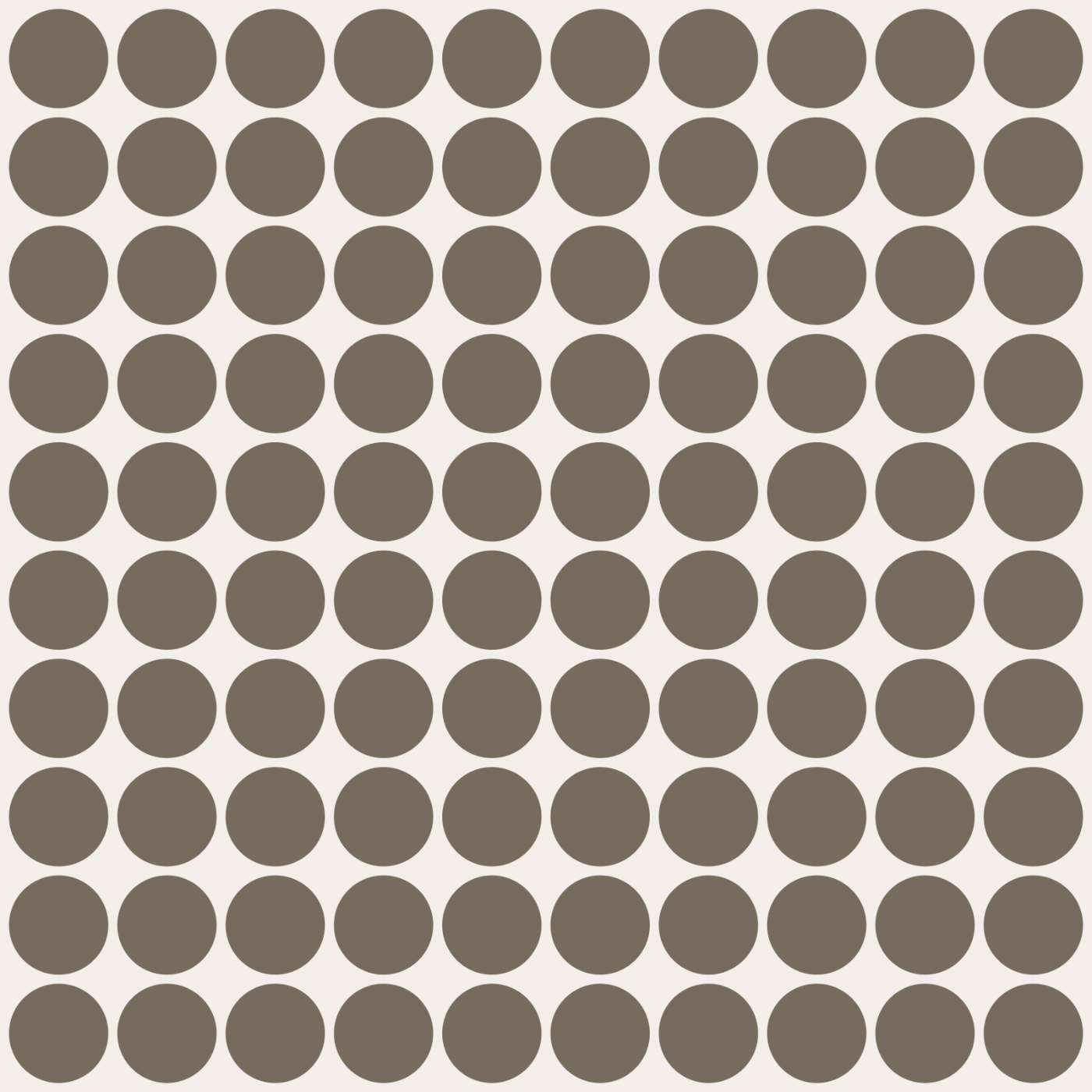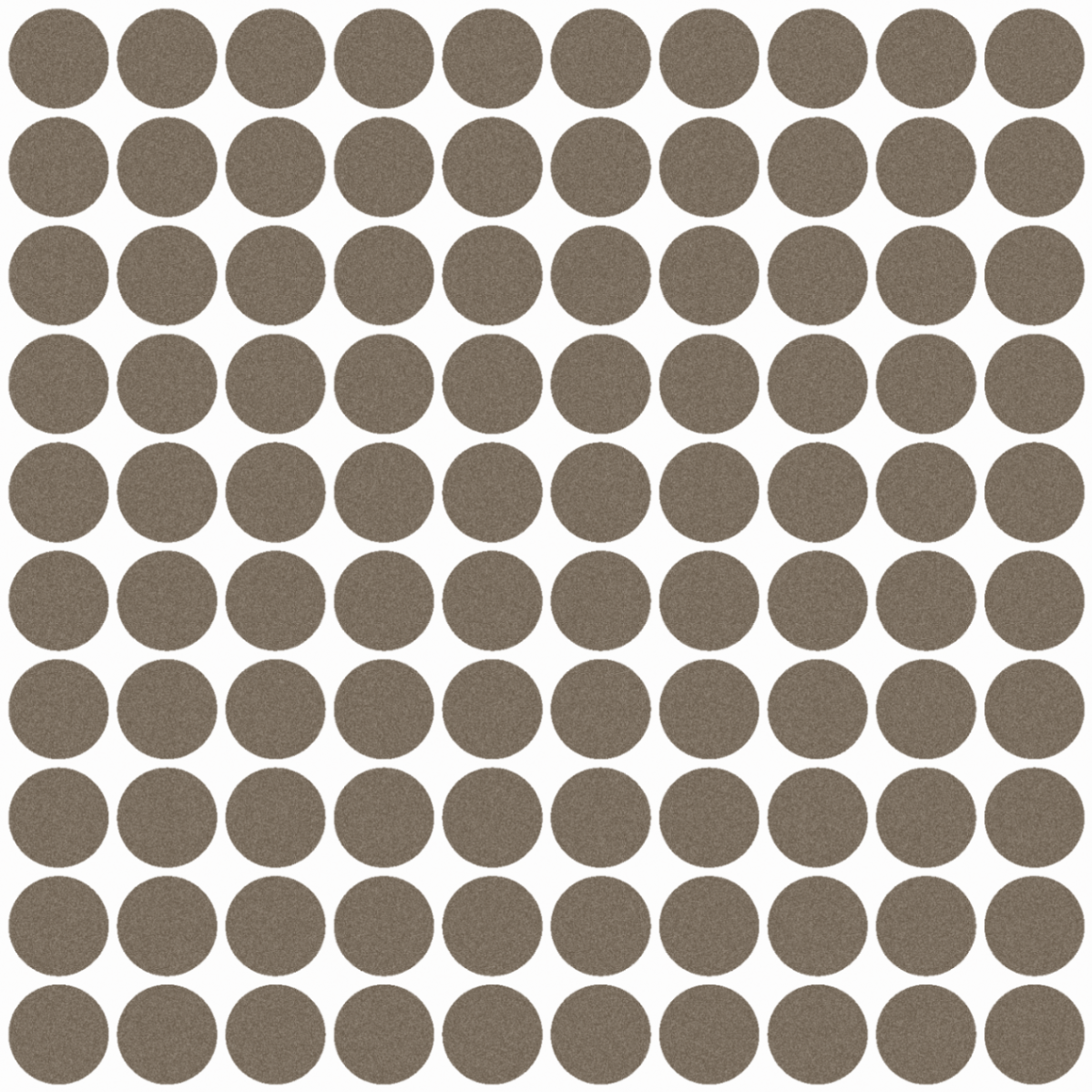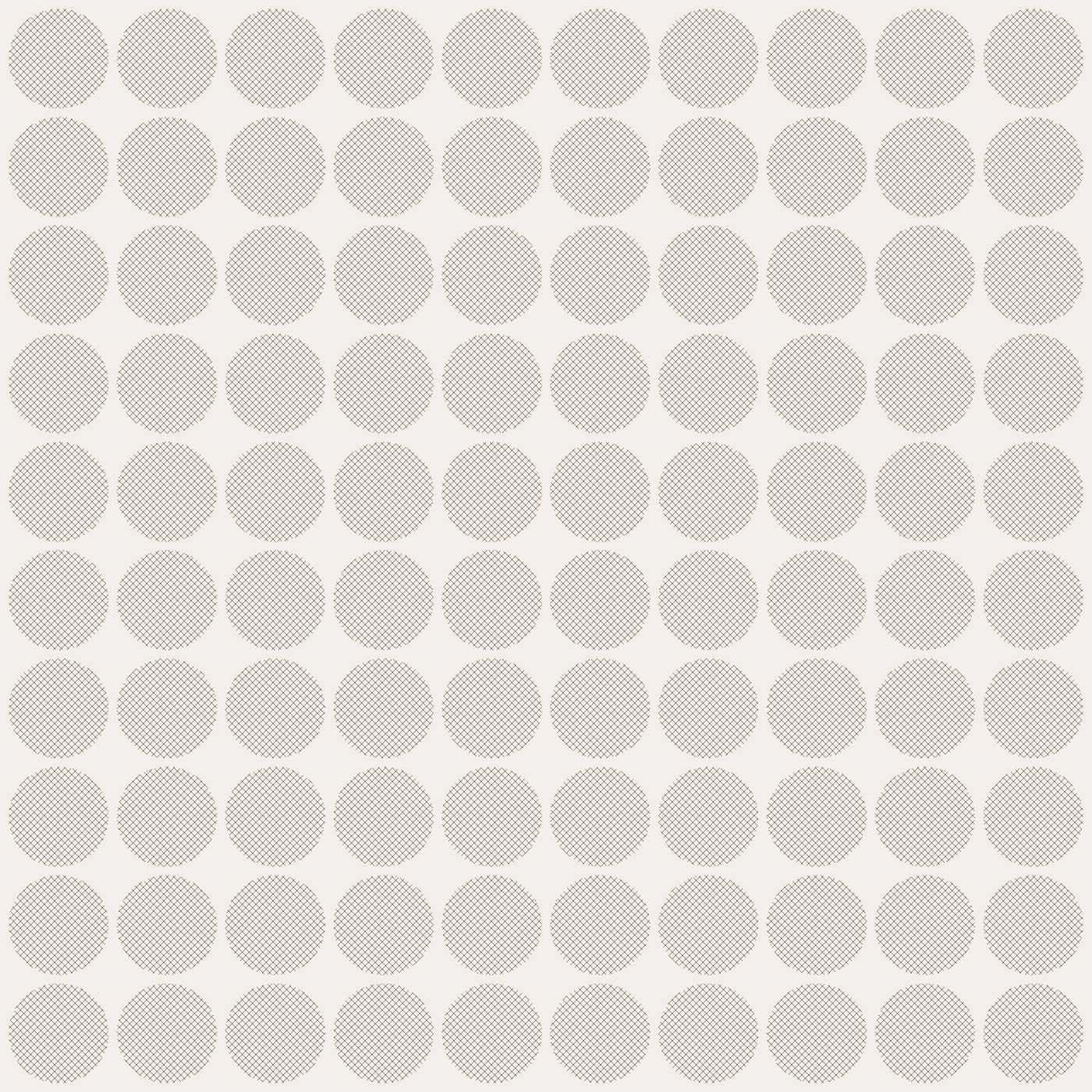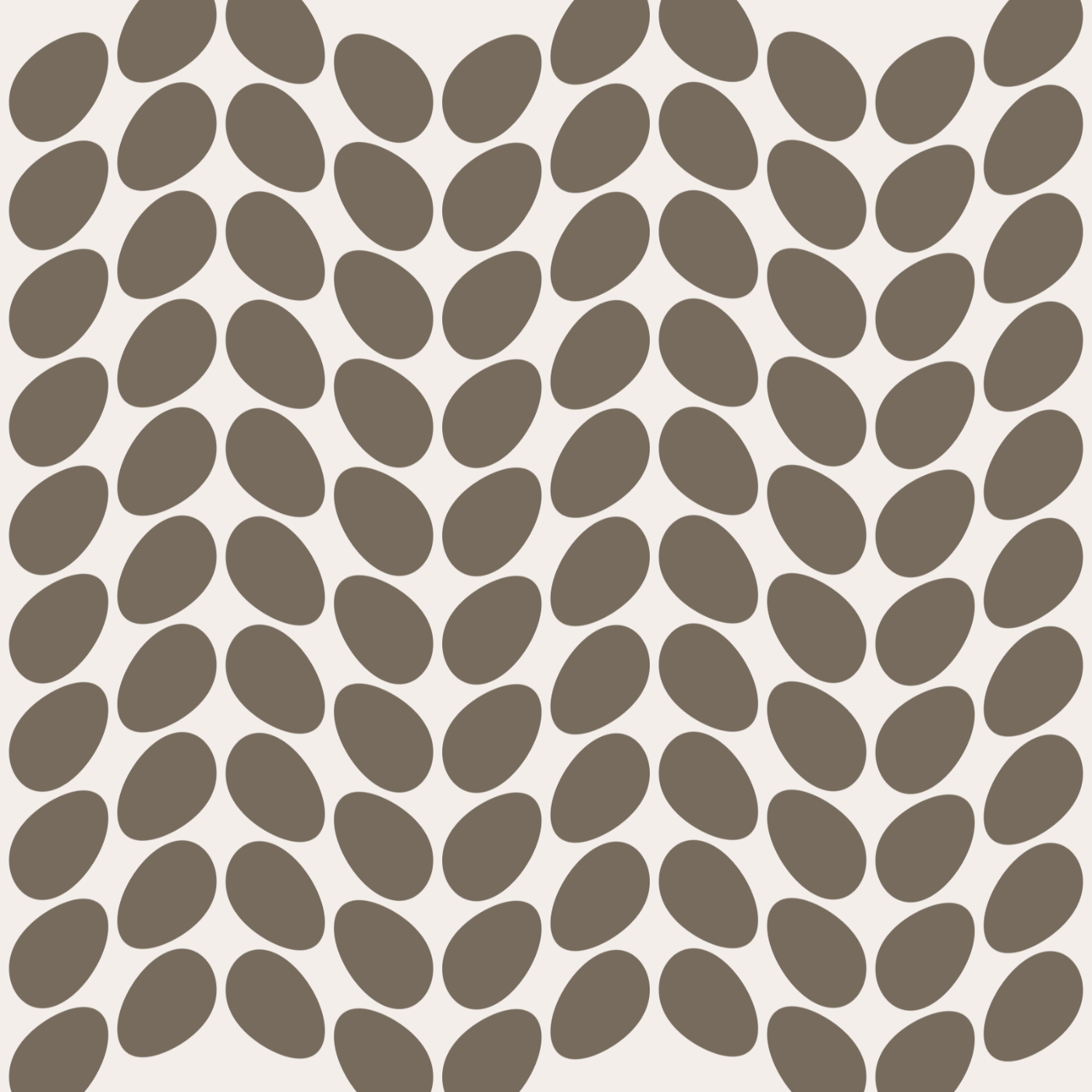Open8
glsl表現備忘録(p5.js)
p5.jsでGLSL(フラグメントシェーダー)を書いていて高確率でどうやったっけ?となるのでどの表現がどのコードだったのかをメモ書きしていく。
使用するテクスチャイメージはこちら。

基本コードは以下である。基本的にテクスチャであるpgに対してシェーダーをかけていく。
let pg;
let theShader1;
function setup() {
createCanvas(800, 800,WEBGL);
pg = createGraphics(width, height);
pg.noStroke();
pg.fill('#776B5D');
background('#F3EEEA');
noStroke();
}
function draw() {
translate(-width / 2,-height / 2);//WEBGLは真ん中基準だがcreageGraphicsは左上基準なので合わせるために設定している
pg.push();
grid(10,pg);
pg.pop();
// シェーダーの設定
theShader1 = createShader(shader1.vs, shader1.fs);
shader(theShader1);
theShader1.setUniform(`u_tex`, pg);
theShader1.setUniform(`u_time`, frameCount / 35);
theShader1.setUniform('u_resolution', [pg.width, pg.height]);
// シェーダー適用したイメージを描画
image(pg,0,0);
}
/** num個で分割したグリッドを画面いっぱいに生成する
* @method grid
* @param {Number} num 画面の分割数
*/
const grid = (num,pg) => {
const n1 = num + 1;
const margin_left = width / n1 / n1;
const margin_bottom = height / n1 / n1;
const nw = width / n1;
const nh = height / n1;
for (let i = 0; i < num; i++) {
for (let j = 0; j < num; j++) {
const x = nw * i + margin_left * (i + 1);
const y = nh * j + margin_bottom * (j + 1);
pg.circle(x + nw / 2, y + nw / 2, nw);
}
}
};
keyPressed = () => {
if (key === 's') {
saveCanvas(canvas, 'canvas', 'png');
//saveGif('canvas', 4);
}
};
const shader1 = {
vs: `
precision highp float;
precision highp int;
attribute vec3 aPosition;
attribute vec2 aTexCoord;
varying vec2 vTexCoord;
uniform mat4 uProjectionMatrix;
uniform mat4 uModelViewMatrix;
void main() {
vec4 positionVec4 = vec4(aPosition, 1.0);
gl_Position = uProjectionMatrix * uModelViewMatrix * positionVec4;
vTexCoord = aTexCoord;
}
`,
fs: `
precision highp float;
precision highp int;
varying vec2 vTexCoord;
uniform sampler2D u_tex;
uniform float u_time;
uniform vec2 u_resolution;
float PI = 3.14159265358979;
void main() {
vec2 uv = vTexCoord;
vec4 tex = texture2D(u_tex, uv);
gl_FragColor = tex;
}
`,
};
走査線を描く。
 主要コードは以下。
主要コードは以下。
// 走査線を書く
float scanLineInterval = 1500.0; // 大きいほど幅狭く
float scanLineSpeed = u_time * 5.0; // 走査線移動速度
float scanLine = max(1.0, sin(uv.y * scanLineInterval + scanLineSpeed) * 1.6);
tex.rgb *= scanLine;
参考資料:
ホワイトノイズを描く。
 主要コードは以下。
主要コードは以下。
float random(vec2 c){
return fract(sin(dot(c.xy ,vec2(12.9898,78.233))) * 43758.5453);
}
void main() {
vec2 uv = vTexCoord;
// white noise用
float interval = 3.0;
float strength = smoothstep(interval * 0.5, interval, interval - mod(u_time, interval));
float whiteNoise = (random(uv + mod(u_time, 10.0)) * 2.0 - 1.0) * (0.15 + strength * 0.15);
vec4 tex = texture2D(u_tex, uv);
gl_FragColor = tex + whiteNoise;
}
新たにrandom関数を定義しているがこの形ではiosでは動かないとの話もあったので要注意。
記事がそこそこ前なので今は改善されているかもしれない(未検証)。
浮動小数点の精度のバラつき
参考資料:
魚眼レンズを描く。

主要コードは以下である。
float apertureHalf = 0.5 * u_aperture * (PI / 180.0);
float maxFactor = sin(apertureHalf);
vec2 xy = 2.0 * uv.xy - 1.0;
float d = length(xy);
if (d < (2.0-maxFactor)){
d = length(xy * maxFactor);
float z = sqrt(1.0 - d * d);
float r = atan(d, z) / PI;
float phi = atan(xy.y, xy.x);
uv.x = r * cos(phi) + 0.5;
uv.y = r * sin(phi) + 0.5;
}
参考資料:
ハッチングを描く。
 主要コードは以下である。
主要コードは以下である。
float hatch = 10.0;// ハッチングのサイズを変えられる
float lum = length(texture2D(u_tex, uv.xy).rgb);
vec4 tex = texture2D(u_tex, uv);
gl_FragColor = vec4(1.0, 1.0, 1.0, 1.0);
bool isHatch = false;
if (lum < 1.00){
if (mod(gl_FragCoord.x + gl_FragCoord.y, hatch) == 0.0){
gl_FragColor = tex;
isHatch = true;
}
}
if (lum < 0.75){
if (mod(gl_FragCoord.x - gl_FragCoord.y, hatch) == 0.0){
gl_FragColor = tex;
isHatch = true;
}
}
if (lum < 0.50){
if (mod(gl_FragCoord.x + gl_FragCoord.y - 5.0, hatch) == 0.0){
gl_FragColor = tex;
isHatch = true;
}
}
if (lum < 0.3){
if (mod(gl_FragCoord.x - gl_FragCoord.y - 5.0, hatch) == 0.0){
gl_FragColor = tex;
isHatch = true;
}
}
if(isHatch == false){
gl_FragColor = vec4(u_color, 1.0);
}
backgroundとハッチングする箇所のだし分け方法が思い浮かばなかったためbackgroundのカラーを別途p5jsからglslへ渡している。(u_color)
参考資料:
波に合わせてゆがませる。

主要コードは以下である。
float waveSize = 0.04;
uv.y += waveSize * sin(uv.x * PI* 5.0 + u_time);
単純にサインカーブを使ってテクスチャをゆがませているだけ。
参考資料:
ぼかしたい。

主要コードは以下である。
const float Directions=100.;// BLUR DIRECTIONS
const float Quality=10.;// BLUR QUALITY
const float Size=5.;// BLUR SIZE
// 省略
for(float d=0.;d<Pi;d+=Pi/Directions){
for(float i=1./Quality;i<=1.;i+=1./Quality){
Color+=texture2D(u_tex,uv+vec2(cos(d),sin(d))*Radius*i);
}
}
ガウス分布を使用したぼかしフィルタ。上3つパラメータでぼかし感を変え、下のfor文で畳み込みを計算しピクセルの色を決定している。
参考資料: